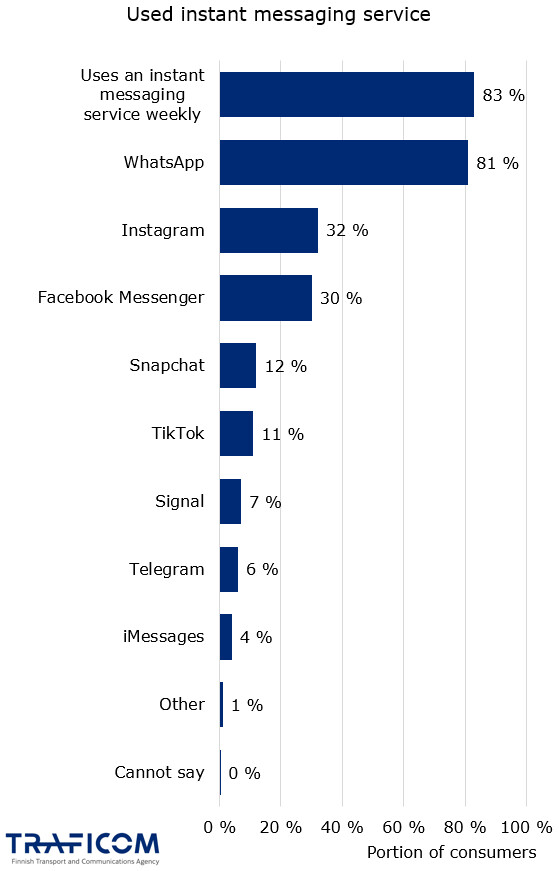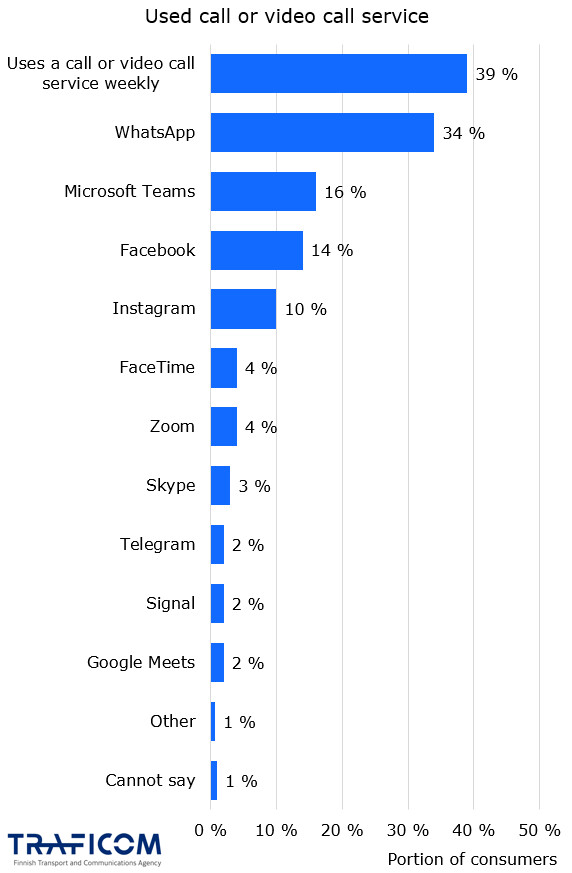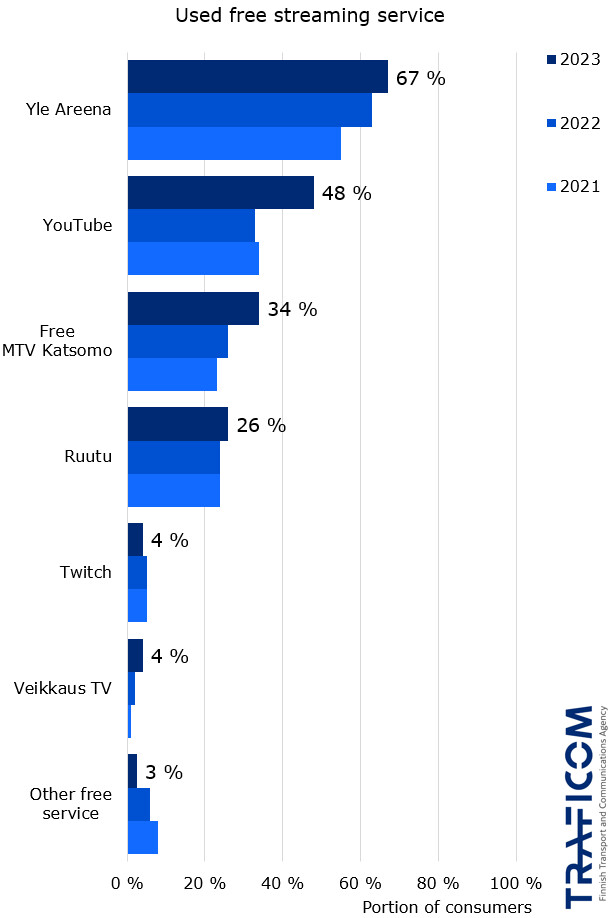Instant messaging applications have established a place in consumers' daily lives, while the use of voice- and video calling apps on the internet has fallen since the COVID-19 pandemic. The most popular service is Meta's WhatsApp. Around 70% of consumers use free TV streaming services and half use paid services. The most commonly used services are Netflix and Yle Areena. The data is based on a consumer survey conducted by the Finnish Transport and Communications Agency Traficom at the end of 2023.
83% of consumers use an instant messaging service on a weekly basis. The use of messaging apps is commonplace for many consumers, while the use of traditional text messaging has declined. Last year, however, there were still 743 million text messages sent from consumer subscriptions, or 145 per subscription. From 2014 to 2023, the number of text messages sent by consumers decreased by 72%. Over the same period, weekly use of instant messaging apps increased from 30% to over 80%. According to Statistics Finland, only 58% of consumers had a smartphone in 2014. By 2023, the smartphone had found its way into 90% of hands.
During the worst of the COVID-19 pandemic in 2020 and 2021, the use of online voice and video calls peaked, with more than half of consumers making these calls weekly during work or leisure. By the end of 2023, this figure had fallen to around 40%. During the pandemic, traditional call minutes also increased briefly but have since fallen again. “As leisure programmes and working life have returned to pre-pandemic levels, the need for video calls has decreased,” says Senior Specialist Marja Heinonen.
Meta and Microsoft services among the most popular
In a 2023 consumer survey, Traficom surveyed for the first time which services consumers used to send instant messages and make internet calls. Meta's WhatsApp was by far the most popular in both services. Up to 81% of consumers use WhatsApp weekly to send messages and 34% use it weekly to make calls. Next in instant messaging were Instagram and Facebook Messenger, also by Meta. Second place in calls went to Microsoft Teams, which many people probably use on a weekly basis, at least at work. Meta’s Facebook was among the most used services, including for phone calls.


Free streaming services used by 70% of consumers – paid services by 50%
At the end of 2023, 50% of consumers had subscribed to a paid TV streaming service in the last three months, compared to 25% in 2015. Free streaming services have been around for some time. At the end of last year, around 70% of consumers had viewed the most common free services, compared to 61% in 2015.
The most commonly subscribed-to paid service has been Netflix for several years now, although it has had several competitors over the years, some of which have quickly become quite popular. Disney+ entered the Finnish market during the COVID-19 pandemic and immediately became one of the most popular paid streaming services. Finnish streaming services have kept their subscriber base stable at just over 10%. Only a small proportion of consumers in Finland still subscribe to internationally large paid streaming services such as AppleTV+ or Amazon Prime.
Of the free-to-air services, the most popular is Yle Areena, which had been watched by 67% of consumers at the end of 2023, while the services of other Finnish TV channels are used by around a third of consumers. The second most popular free service is YouTube. Free-to-air broadcasts are also viewed on the websites of various news services and on the communication channels of, for example, public organisations.


“In our everyday lives, we often don't even think about how many things we do online, even though instant messaging apps and streaming services are mostly online only. Traficom's mission is to ensure equal access for all to official and leisure services offered online,” says Heinonen.
Information about the survey
The consumer survey was conducted by Verian (Mantle Finland Oy). ‘A total of 2,162 people aged 18 and over responded to the survey via an online questionnaire. The survey was conducted in December 2023. The maximum margin of error in the survey is 2.2 percentage points either way.
When making comparisons, it should be noted that the margin of error is larger between years than within a single year's survey. In previous years, the survey was conducted as telephone interviews with a similar sample, which may have an impact on the results.
Further information
Consumer survey – communication services 2023 (External link)
Use of information and communications technology by individuals 2023 (External link)
Traficom's consumption of telephone services (External link)
Marja Heinonen, Senior Specialist, tel. 029 534 7355, marja.heinonen@traficom.fi